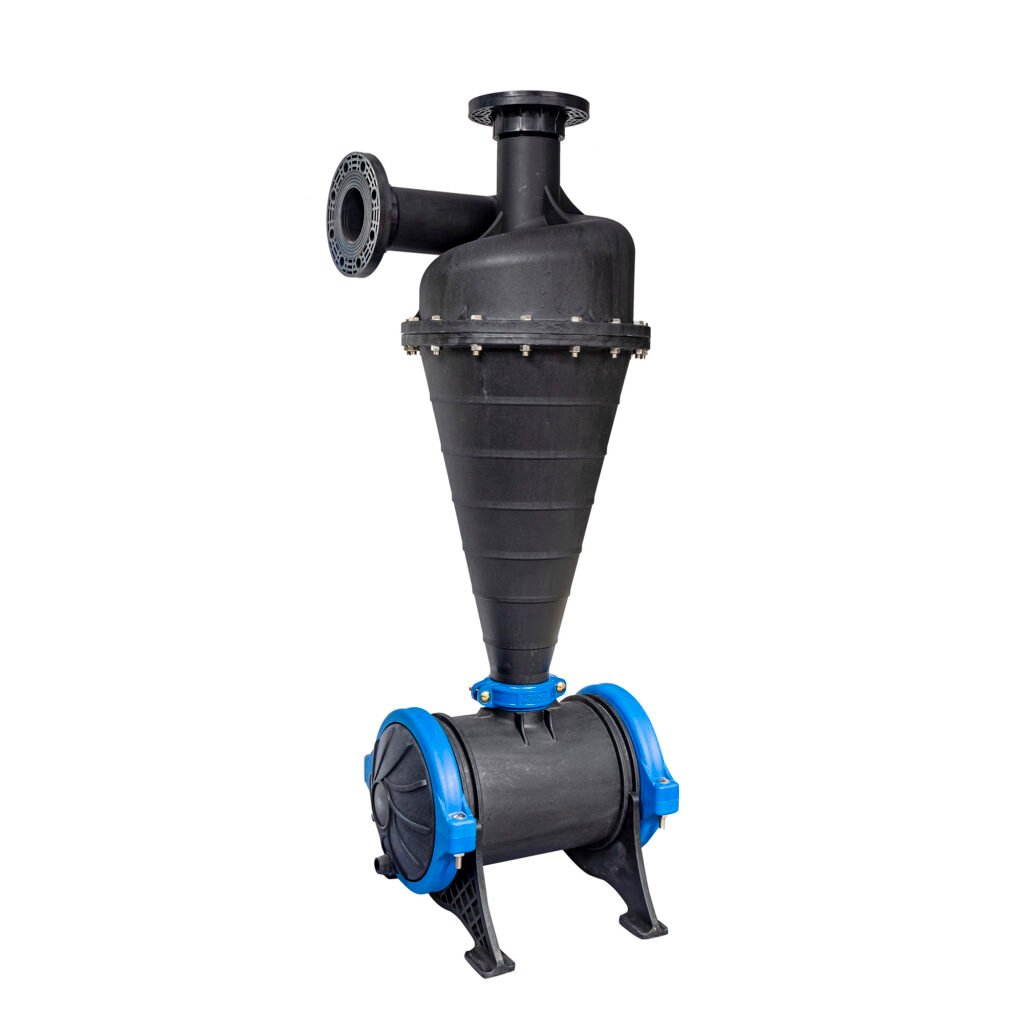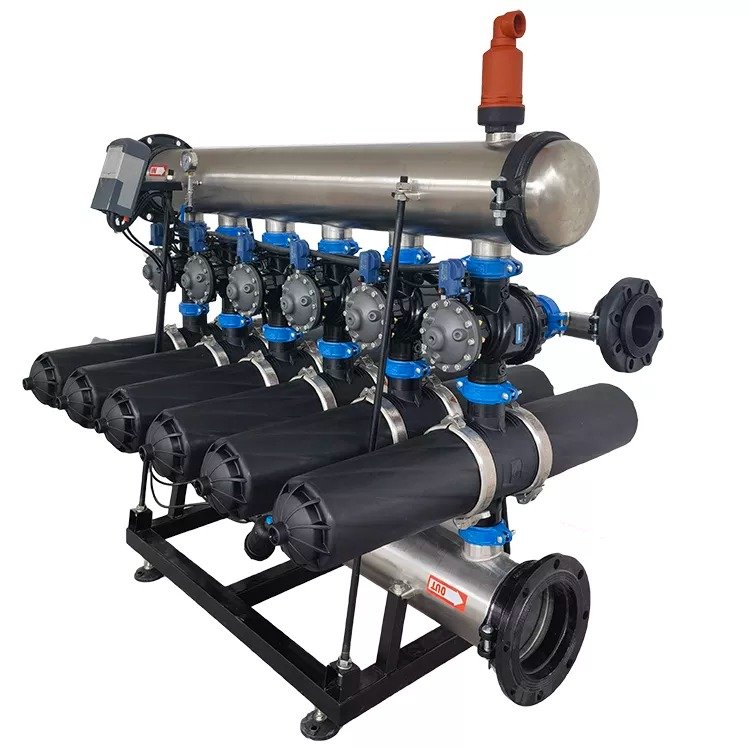The filter is a key equipment to remove all kinds of organic and inorganic substances in the water flow and ensure the normal operation of the drip irrigation system. Because the flow channel of the drip irrigation pipe in the drip irrigation system is very small and easy to block, even if a relatively clear well water or spring water is used as the drip irrigation water source, a filter must be set up to ensure the normal operation of the drip irrigation system. For open channel flow, a screen or gravel layer should also be provided in the front section of the catchment as a water filtration device. If necessary, a sedimentation tank should also be set up to ensure that the water flow into the pump is clean and reduce the burden on the filter. The filter is generally placed behind the fertilization facility.
1.Centrifugal filter is also known as swirl water and sand separator or vortex water and sand separator. Its structure is simple, there are no moving parts, and it can continuously filter the irrigator with high sand content. Its disadvantage is that it cannot remove impurities such as organic matter with a lighter specific gravity than water, and the filtration effect decreases when the pump starts and stops, and the head loss is also large. When the sand content in the drip irrigation water source is large, the centrifugal filter is generally used as a primary filter with a screen filter or a disc filter.

2. Sand filter is also known as quartz sand filter, sand filter. It is a filter for three-dimensional depth filtration by forming a sand bed of homogeneous and equal particle-size quartz sand as a filter carrier. Usually, at least 2 pieces are used. The sand filter is the most used filter when the drip irrigation water source is very dirty, and it filters out organic matter very well. The thickness of the sand media provides the effect of a three-dimensional filter and has a much greater capacity to remove impurities than a strainer. The main disadvantage is that the price is more expensive, the management requirements are higher, and the silt and very fine soil particles cannot be filtered. It is generally used as a primary filter for reservoirs, open channels, ponds, rivers, drainage channels, and other sewage water sources.

3. Screen filter is a traditional and most widely used filter, which uses wire, strip, rod, or plate through weaving, welding, drilling, sintering, and other processing processes, processed into a certain precision hole, gap filter media body. Common are woven mesh, wedge wire mesh, laser perforated mesh, and sintered plate mesh. The mesh filter can well remove the very fine sand particles in the drip irrigation water source, and it is very effective to use it when the irrigation water source is relatively clear, but when there is more algae or organic dirt, it is easy to be blocked and needs to be cleaned frequently. Filter filters are mostly used as final filters.

4. The filter medium of a laminated filter also known as disc filter, consists of many annular plastic sheets with fine flow channels that can be pressed and loosened. When pressing the annular plastic sheet, its composite internal section provides three-dimensional, thorough filtration similar to that produced in sand and gravel filter media, with much higher filtration accuracy than screen filters. Therefore, there is a high degree of efficiency. Disc filters are small, can be assembled at will, are easy to rinse, safe, and reliable. Disc filters are available in both automatic and manual flushing methods, and both primary and final filtration can be used.



